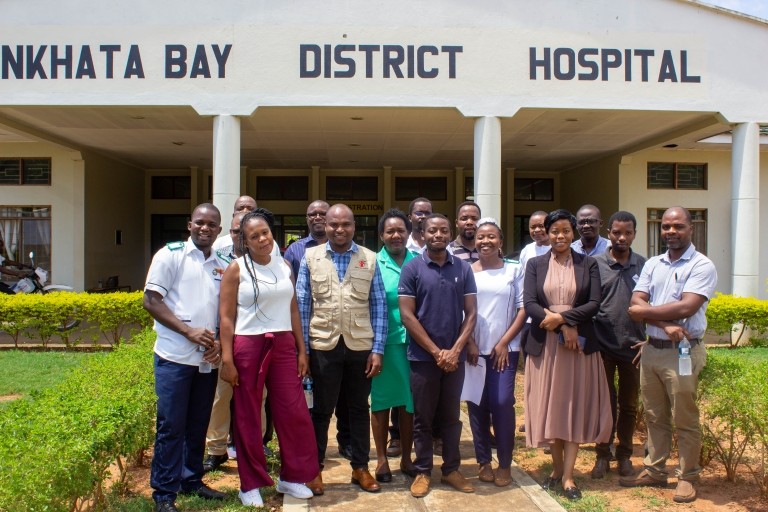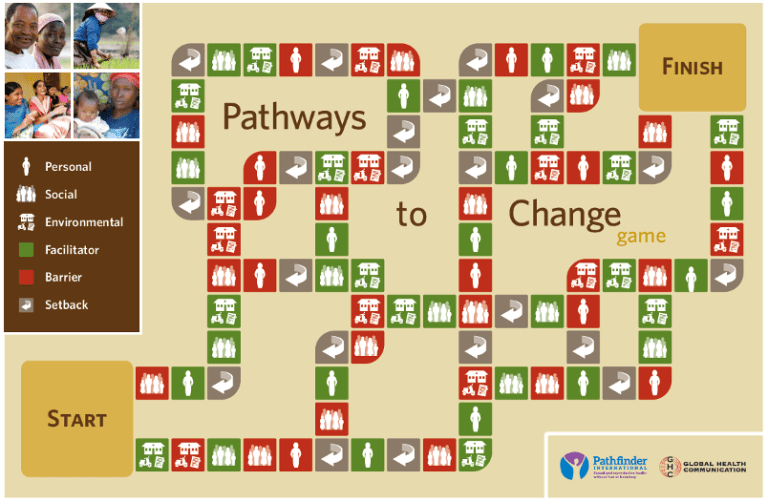Feature
In Malawi, data-driven design paves the path to health services for fishing community youth

Pact has long worked with Malawi’s fishing communities to improve their lives. Through this work, we saw a clear need for better access to family planning and reproductive health services in fishing communities, especially among adolescents and youth.
Pact was well positioned to help. Since 2014, with funding from USAID, we have worked side by side with Malawi’s fishing communities and government to restore fish populations in local lakes, which are a vital source of nutrition and livelihoods. Pact’s current project, REFRESH, focuses on Lake Malawi, the most biologically diverse lake in the world. What’s more, under a REFRESH predecessor project, Pact had gained experience successfully integrating health programming – HIV prevention – into a fish livelihoods and environmental conservation project.
Now, through USAID’s MOMENTUM Country and Global Leadership project, Pact and partners Save the Children and Jhpiego saw an opportunity to integrate sexual and reproductive health programming into REFRESH’s biodiversity and conservation focus. The hope was to learn from the collaboration for future integrations in population, environment and development (PED) projects.
“The economic power imbalances prevalent in fishing communities render adolescent girls and young women vulnerable to unsafe sexual practices,” explains William Dothi, Pact’s MERL specialist in Malawi.
But there was a critical component missing: While there was existing literature about barriers and facilitators to accessing sexual and reproductive health services, there was limited published evidence on these factors among fishing community populations in Malawi specifically.
Data-driven, evidence-based
In addition to engaging communities in development programming, Pact’s approach prioritizes programming built on data and evidence.
“Evidence-based and data-driven implementation design paired with co-creation and stakeholder buy-in are critical to ensuring that global development programming is effective,” says Tripti Pande, a senior officer with Pact’s learning and evidence practice. “They enable us to answer key questions about the needs and wishes of communities, our methods and results and whether we are truly listening to and serving communities.”
To fill the evidence gap, Pact undertook a formative assessment to ensure that our implementation strategy responded to the needs of the population we hoped to serve. With a local consulting firm, Pact conducted the assessment in two REFRESH implementing districts, Mangochi and Nkhata Bay, with support from Save the Children and Jhpiego. The objective was to understand the barriers and facilitators to accessing family planning and reproductive health services among adolescents and youth living around Lake Malawi, in order to build a gender-transformative, positive-youth development implementation strategy.
The assessment used a qualitative approach, with focus group discussions as well as key informant interviews, all conducted in Chichewa, the local language. Focus groups gathered information from youth while interviews targeted key stakeholders such as local Beach Village Committee leaders, Health Surveillance Assistants and health facility managers. Overall, male and female enumerators gathered information from 92 youth and eight key stakeholders.
Overcoming barriers with gamification
Topics such as sexual and reproductive health services can be sensitive because of stigma and privacy. With this in mind, the team used a special approach to data collection through an educational tool, Pathways to Change, developed by Pathfinder International. The tool is a game similar to Chutes and Ladders that assists in data collection specifically in focus group formats assessing ways to influence a change in behavior. The game includes the use of characters. While the game focuses conversations on sensitive topics, the use of characters creates a safe space for youth to share their thoughts without speaking about their direct experience.

“This approach was very successful in identifying priority barriers and facilitators and meeting the formative assessment goals,” Pande says.
Reported barriers included limited skills of health care workers to provide youth-friendly services, a lack of privacy in health centers, few local youth groups and clubs, community and household-level stigma, power imbalances between men and women in fishing communities, fear of parents and misinformation.
Design driven by communities
With findings in hand, Pact and our partners set to work designing programming that responded to the barriers and facilitators that were uncovered. We shared results with the Reproductive Health Directorates in Mangochi and Nkhata Bay. Then we set objectives and designed activities in collaboration with key local stakeholders, including youth, to achieve them.
“We’re confident in effective programming, as the priorities were defined through an evidence-based approach as well as a comprehensive implementation design workshop involving all key stakeholders, including the Ministry of Health, fisheries associations, youth clubs and more,” Pande says. “The latter enabled key stakeholders to guide implementation activities and propose potential methods to integrate activities in pre-existing work within the district.”
Dothi adds: “This program is a classic example of effectively determining the cause of a problem and designing an appropriate intervention driven by evidence.”
Pande notes that Pact plans to conduct a learning agenda at the end of implementation to understand successes and challenges on integrating population, environment and development into a single activity. Currently, the learning agenda and learning questions are being defined in consultation with all relevant stakeholders to ensure that the team is addressing gaps in PED approaches.
“From the outset, this has been an excellent example of both data-driven programming and community engagement,” Pande says. “We plan to continue this through the life of the program through implementation with a local youth-serving organization, as well as activities including the use of male and female champions and mentors selected by the community, community-led dialogue sessions, joint meetings between the health and fishing sectors, reflection sessions with key stakeholders and more.”